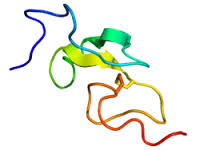- Natural Selection
The original idea from the god of biology, Darwin himself. For this first example I’m going to need an assistant…hmmm… how about finches, because no one uses finches to explain natural selection! Ever. So, we’ve all heard that old story in biology class of when Darwin went down to Galapagos. He was chillin’ on the cool beach when he noticed the different finches had similar and also very distinct characteristics. The biggest of the differences were the size of their beaks. There are 4 finches (according to the biology bedtime story. Of course, we all know there was, like, 20 species studied.) The Large ground finch (LGF), the Medium ground finch (MGF), the Small tree finch (STF), and the Green warbler-finch (GWF). The LGF’s beak was developed to be the best for cracking nuts open to eat. MGF’s beaks were of medium size, useful for eating seeds and young leafs. STF’s beaks were curved and grasping, enabling it the best way to eat adult insects and caterpillars. And the Green Warbler-Finches thin beak made it capable of reaching small insects. But, you might ask, “A yo teach, what do dey food had anyathin’ tah do wit dat Durwin guy?” Well.. it has everything to do with Darwin’s idea of natural selection! Adapting to wants climate and needs, these birds beaks changed over time in order to adapt to eating their specific food sources. And that’s how evolution ended up in our text books. You’re welcome. Site: birds.fieldmuseum.org/stories/selection/natural-selection
- Sexual Selection
Peacocks. Yes, peacocks feathers are really pretty if you haven’t noticed already. But why are they that way; so big, fluffy, and colorful? Well, that has to do with Sexual Selection! The reason their feathers are so incredibly awesome, is because only the prettiest set of majestic feathers get the ladies. According to Roslyn Dakin at the University of British Columbia, on average only 5 percent of males get the majority of the females, while the rest get none! Now, I call that hard women to please. And it’s only because the women only like the guys with the biggest prettiest feathers. Over time the ones that didn’t live up to expectations just didn’t mate and their genes weren’t passed on. Generation after generation this happened which, eventually, developed into the manes we see today. Such beauty, many wow, much cool. Site: http://www.slate.com/blogs/wild_things/2015/08/17/peacock_evolution_through_sexual_selection_feathers_sounds_eye_tracking.html
- Mutation
In today’s world pet bird mutations are a normal thing. Now they aren’t as people think, like weird third wing or third leg, but it’s in the pigment of the bird’s feathers, and they are usually favorable. According to an article on the birdchannel.com, if an owner has the choice between a mutated and a regular bird, then they more often than not will choose the mutated. Although this may also not be a good thing. If an owner takes a mutated bird and keeps it, often the bird never mates, never continuing its bloodline. But this does make pet shops prefer to take in more mutated than the lesser, which may make bird breeders try and keep breeding with these traits eventually making a new breed of their own. Kinda cool how things work that way. Kinda. Site: http://www.birdchannel.com/bird-magazines/bird-talk/june-2007/bird-mutations-trend.aspx
- Genetic Drift
For genetic drift I want to bring in Austin’s very own PARAKEETS. *SKWAAUUUQQQ* Oh yeah, they talk too. *WE TALK SKWAUUQ* So a cool thing about parakeets is that they all come in different colors. Blue, white, yellow, brown and even multi-colored. But the one parakeet that we always think of in our head is the green ones. But why you say? Well if you live in Austin, THEY ARE EVERYWHERE. But have you noticed that they’re all one color? Green. Green is the color of those parakeets. Green. In the 1970’s these birds escaped their captivity and managed to survive for generations in Austin. Even though they were identified as Monk parakeets when they escaped, I believe myself that they are evolving through Genetic Drift. Monks are known for their green, with grey and blue mixed in here and there. But I’ve seen Austin’s Parakeets myself and, I’m sorry to say, they don’t fit the description. They’re just all green. And it’s a good thing too. Austin is plentiful with grass and trees, all the shades of green in the world. I believe these parakeets have used genetic drift into having all green feathers. All the colorful ones probably have died off by preditors making the more green, the better to survive. But that’s just a theory. My theory. 😀 Site: Jesse David Hernandez
- Gene Flow
For this I’m just going to be hypothetical about it, because I didn’t want to read a 6 page essay. So, parakeets, like I said they come in all kinds of colors, right? Well then what if a zoo had an exhibit of budgies, a typically blue colored with grey and black feathers on it’s wings, it’s a type of parakeet. And then ohh no! A worker accidentally left the door open for all of the budgies to get out and go into the city! Did I mention the exhibit was in Austin. Okay, so this happens and the budgie population mated with the Monk Parakeet population here and started to mix the DNA. This would be due to gene flow. I would bring more gene variation in the population, and cooler parakeets everywhere. Thank you for reading. Have a good night.



